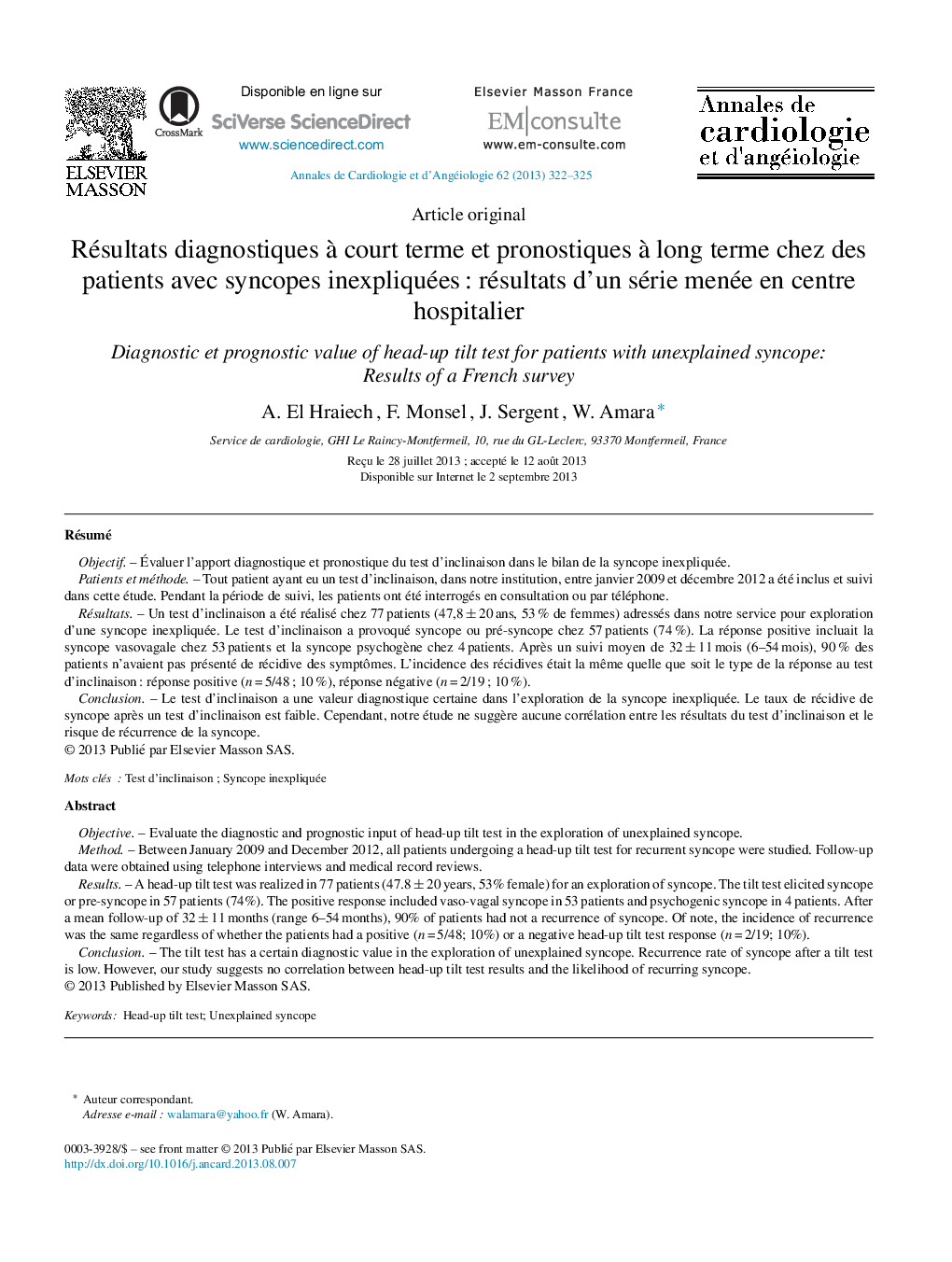| Article ID | Journal | Published Year | Pages | File Type |
|---|---|---|---|---|
| 2868912 | Annales de Cardiologie et d'Angéiologie | 2013 | 4 Pages |
RésuméObjectifÉvaluer l’apport diagnostique et pronostique du test d’inclinaison dans le bilan de la syncope inexpliquée.Patients et méthodeTout patient ayant eu un test d’inclinaison, dans notre institution, entre janvier 2009 et décembre 2012 a été inclus et suivi dans cette étude. Pendant la période de suivi, les patients ont été interrogés en consultation ou par téléphone.RésultatsUn test d’inclinaison a été réalisé chez 77 patients (47,8 ± 20 ans, 53 % de femmes) adressés dans notre service pour exploration d’une syncope inexpliquée. Le test d’inclinaison a provoqué syncope ou pré-syncope chez 57 patients (74 %). La réponse positive incluait la syncope vasovagale chez 53 patients et la syncope psychogène chez 4 patients. Après un suivi moyen de 32 ± 11 mois (6–54 mois), 90 % des patients n’avaient pas présenté de récidive des symptômes. L’incidence des récidives était la même quelle que soit le type de la réponse au test d’inclinaison : réponse positive (n = 5/48 ; 10 %), réponse négative (n = 2/19 ; 10 %).ConclusionLe test d’inclinaison a une valeur diagnostique certaine dans l’exploration de la syncope inexpliquée. Le taux de récidive de syncope après un test d’inclinaison est faible. Cependant, notre étude ne suggère aucune corrélation entre les résultats du test d’inclinaison et le risque de récurrence de la syncope.
ObjectiveEvaluate the diagnostic and prognostic input of head-up tilt test in the exploration of unexplained syncope.MethodBetween January 2009 and December 2012, all patients undergoing a head-up tilt test for recurrent syncope were studied. Follow-up data were obtained using telephone interviews and medical record reviews.ResultsA head-up tilt test was realized in 77 patients (47.8 ± 20 years, 53% female) for an exploration of syncope. The tilt test elicited syncope or pre-syncope in 57 patients (74%). The positive response included vaso-vagal syncope in 53 patients and psychogenic syncope in 4 patients. After a mean follow-up of 32 ± 11 months (range 6–54 months), 90% of patients had not a recurrence of syncope. Of note, the incidence of recurrence was the same regardless of whether the patients had a positive (n = 5/48; 10%) or a negative head-up tilt test response (n = 2/19; 10%).ConclusionThe tilt test has a certain diagnostic value in the exploration of unexplained syncope. Recurrence rate of syncope after a tilt test is low. However, our study suggests no correlation between head-up tilt test results and the likelihood of recurring syncope.
